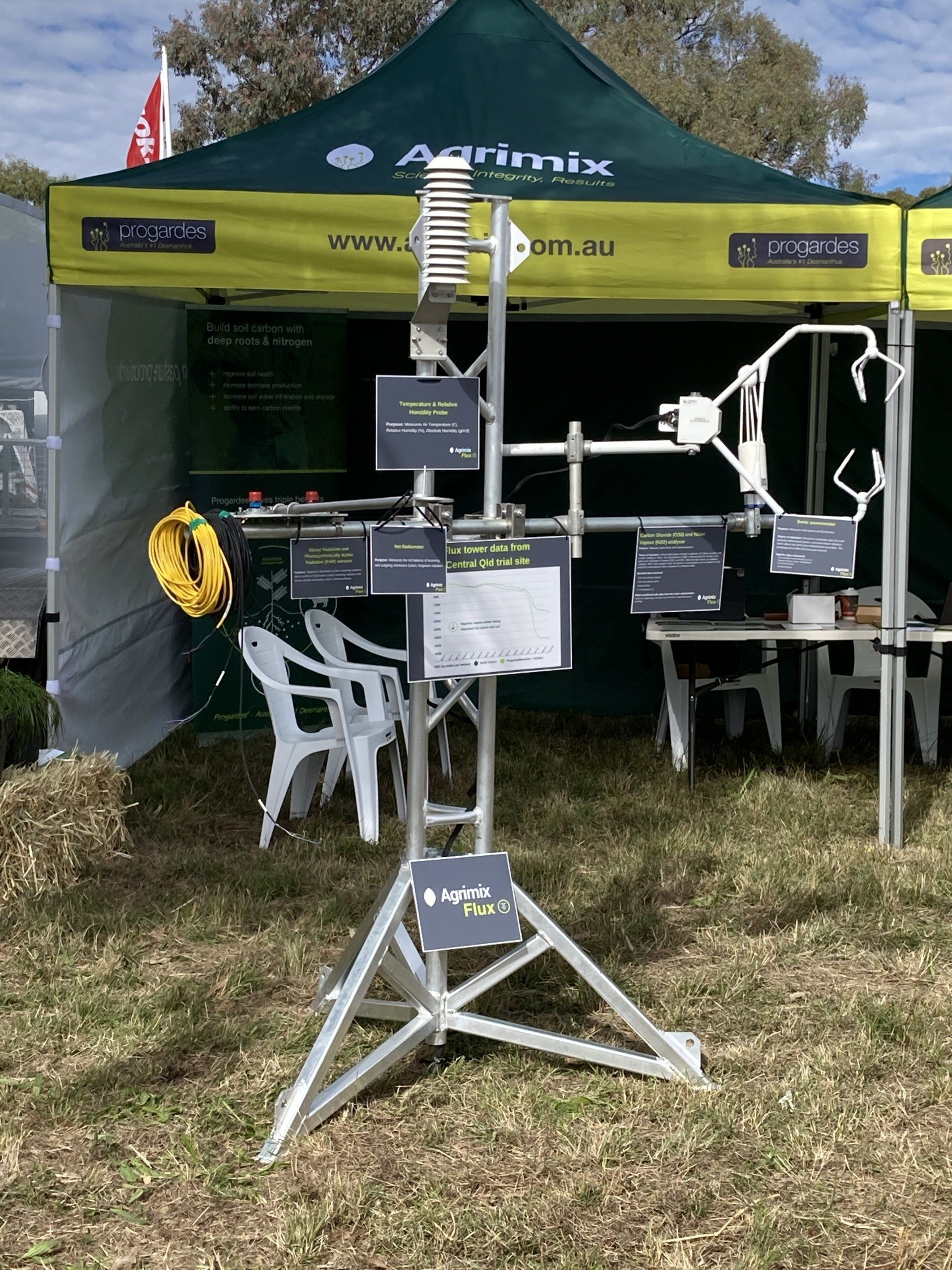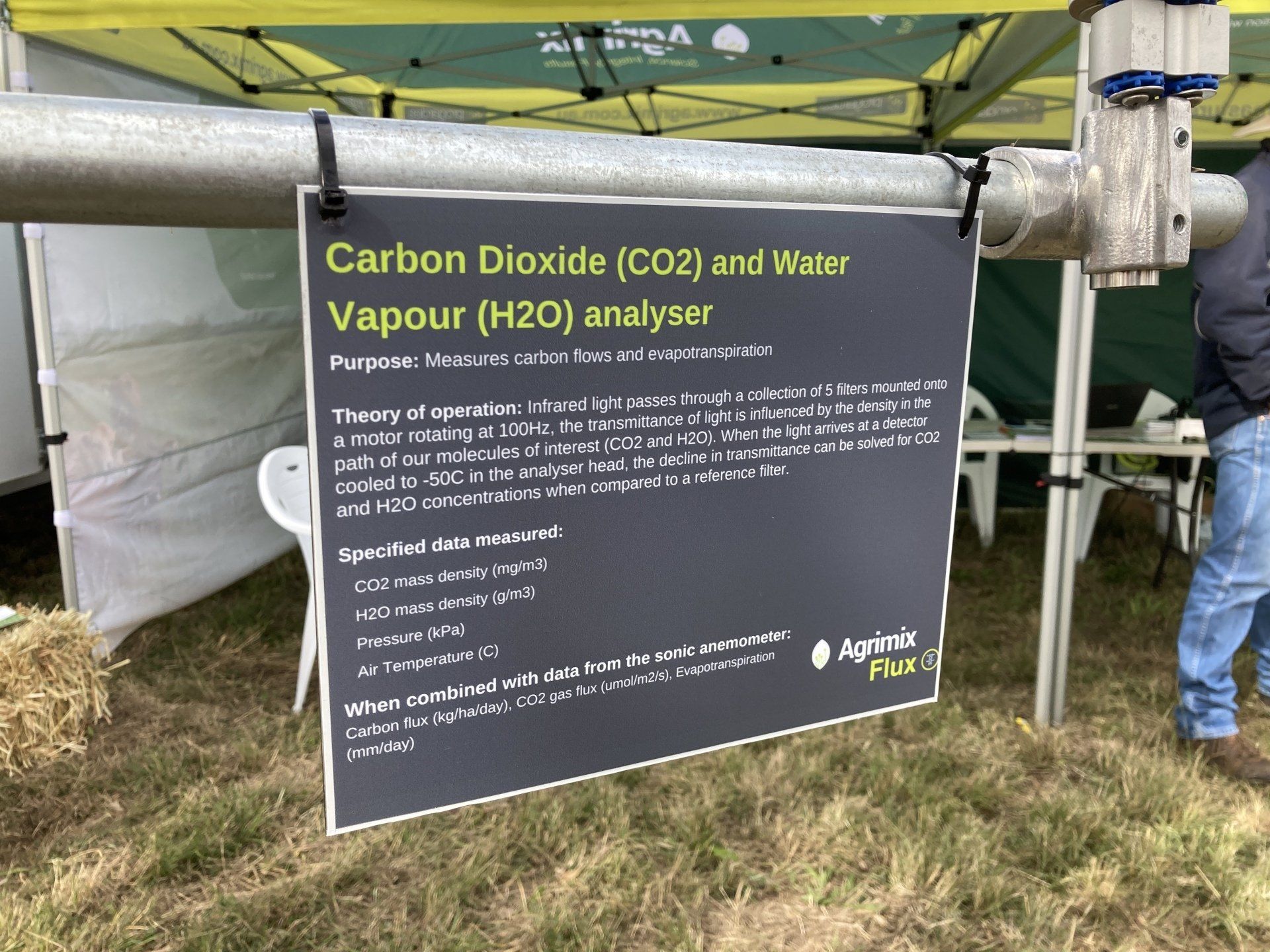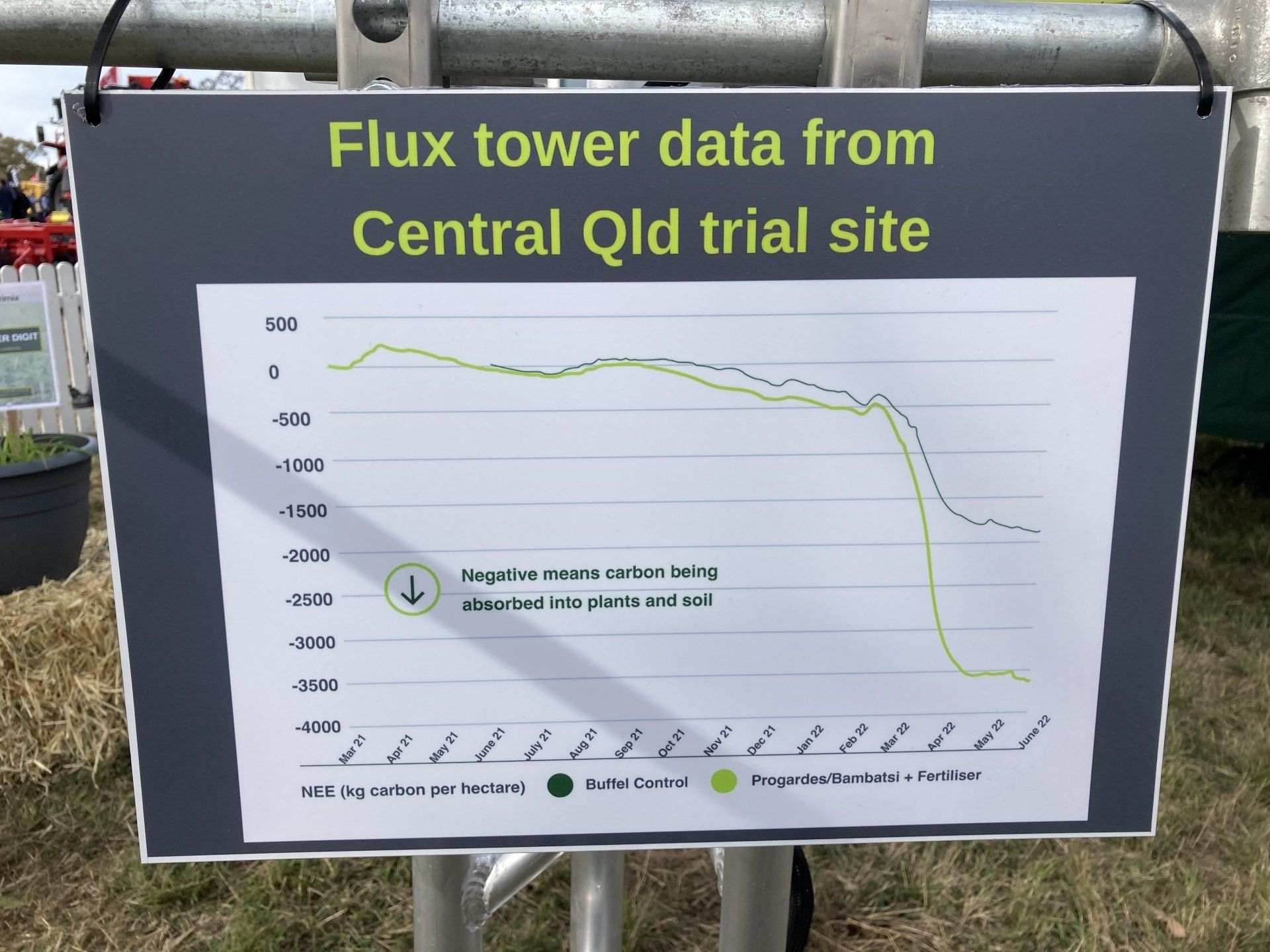Ever heard of an Eddy Covariance Flux Tower?
Well, you’d be forgiven if you hadn’t; and even though this little known technology has been around since 1951 it’s large scale use in measuring the exchange between an ecosystem and the atmosphere is only now being realised in terms of its potential for carbon sequestration in agriculture.
Agricultural group, Agrimix together with Queensland University of Technology (QUT) and funding from Meat & Livestock Australia (MLA), have joined forces to trial the Agrimix Flux at a number of sites in key beef producing areas of Queensland and northern New South Wales.
Agrimix CEO, Ben Sawley said they are more deeply understanding the sequestering of carbon using the eddy covariance methodology thereby making carbon measuring more readily available and affordable for land managers.
“The biggest challenge of soil carbon is that it is very expensive to measure owing to the drilling of soil cores and taking these cores back to a lab to be analysed; it’s also hard to measure accurately across a paddock as there can be large differences in soil carbon from one soil core to another and they may only be metres apart,” Ben Sawley said.

“So what we are doing is using flux towers to calibrate and validate the models which is much more sensitive and faster than soil coring.” - Mr Sawley
“Soil coring is kind of like measuring a 50 cent piece of soil at the MCG and relying on this to get an accurate picture of what’s going on across the entire field,” Mr Sawley said.
“Currently under the Emissions Reduction Fund (ERF) administered by the Clean Energy Regulator in Australia there are only two main approved ways to measure carbon sequestration in soil that is 1) soil coring and 2) validated soil carbon modelling of your farm,” he said.
Like soil coring, carbon modelling is also expensive and setting it up accurately is labour intensive, however once the model is validated it can quantify soil carbon exchanges inexpensively as there is no need for extensive soil coring.
“Agricultural simulation models have been around since the Cold War when the CIA used modelling to understand food production in the Soviet Union,” Ben Sawley said
“To create a good soil carbon model requires lots of calibration and validation to check if it is accurate and you need to do that over a period of time; and in Australia owing to the expanse and variability of landscapes we operate in, you couldn’t just use the same model based on a farm in Rockhampton for a farm in Longreach,” Mr Sawley said.
“So what we are doing is using flux towers to calibrate and validate the models which is much more sensitive and faster than soil coring,” he said.

“This technology has been around for decades so it is tried and tested and it’s been used extensively to measure the ecosystem exchanges in forest systems around the world; this is just utilising an existing technology in a different application.” - Ben Sawley
So how does eddy flux work?
“Eddy flux is a method which measures the flow of carbon dioxide (CO²) molecules into and out of the plants and soil,” Ben Sawley said.
“Simply put; the Agrimix Flux tower is around 6 metres in the air and it can measure a 50-100 hectare radius around it; and it is measuring the flow of carbon into and out of the plants and soil and the net of these gives you the net exchange of carbon dioxide into and out of the soil,” Mr Sawley said.
“We’re calibrating the system to make sure it is accurate and to make sure it is checked through physical soil coring too. Ultimately the goal is to minimise the amount of time land managers have to physically drill soil cores which will help achieve the goal of reducing costs to 1/10th of the current cost,” he said.
“This technology has been around for decades so it is tried and tested and it’s been used extensively to measure the ecosystem exchanges in forest systems around the world; this is just utilising an existing technology in a different application.”
But even with access to readily available and affordable methods of accurate measurement not every land manager is going to be able to build carbon in their soil or secure carbon credits.
“There’s so many variables…clay content, rain, drought, or even the ability to make further improvements because the land managers have done such a good job to date,” Ben Sawley said.
“So rather than only use this technology to harness carbon credits and possibly create a new income stream, we want to also use it to help graziers optimise their pasturelands and make them as productive and sustainable as possible,” Mr Sawley said.

"Eddy flux is a method which measures the flow of carbon dioxide (CO²) molecules into and out of the plants and soil." - Ben Sawley
“So we’re looking to uplift current income streams through productivity achieved by better understanding how sequestering carbon drives pasture growth and ultimately increased weight gains in cattle,” he said.
“One of the 17 sites in the research project is a property in Central Queensland and they have two paddocks, one with buffel grass pastures and the other with improved pastures including Progardes® legume, grasses and fertiliser.”
“And what we can see from the data is that improved pastures with good quality plants are more efficient users of water which enables those pastures to grow more organic matter for the same amount of rainfall thereby enabling more feed for animals and the sequestration of more carbon into the soil.”
“This improved productivity often generates many hundreds of dollars of additional production per hectare which very quickly pays back the investment in the improved pasture.”
The Agrimix Flux tower costs around $100K per unit to install, but the business is looking at fully supplied and operated packages for an annual fee.
“It’s not the infrastructure that the land manager wants, it's the data that it produces so we are looking at offering the towers on a package arrangement whereby the land manager can access the data but doesn’t have to own the infrastructure,” Ben Sawley said.
“We’re at the point where we are starting to pull the opportunity together commercially and are hopeful of being able to offer packages to land managers in the near future,” Mr Sawley said.
For a simple explanation of how eddy covariance works visit https://www.youtube.com/watch?v=CR4Anc8Mkas
For a more detailed explanation of eddy covariance visit
https://www.youtube.com/watch?v=w0JWK95Sj84
For information on how eddy covariance has been used in measure gas exchanges in cereal cropping visit
https://www.youtube.com/watch?v=OfvPoP_xx4Y










